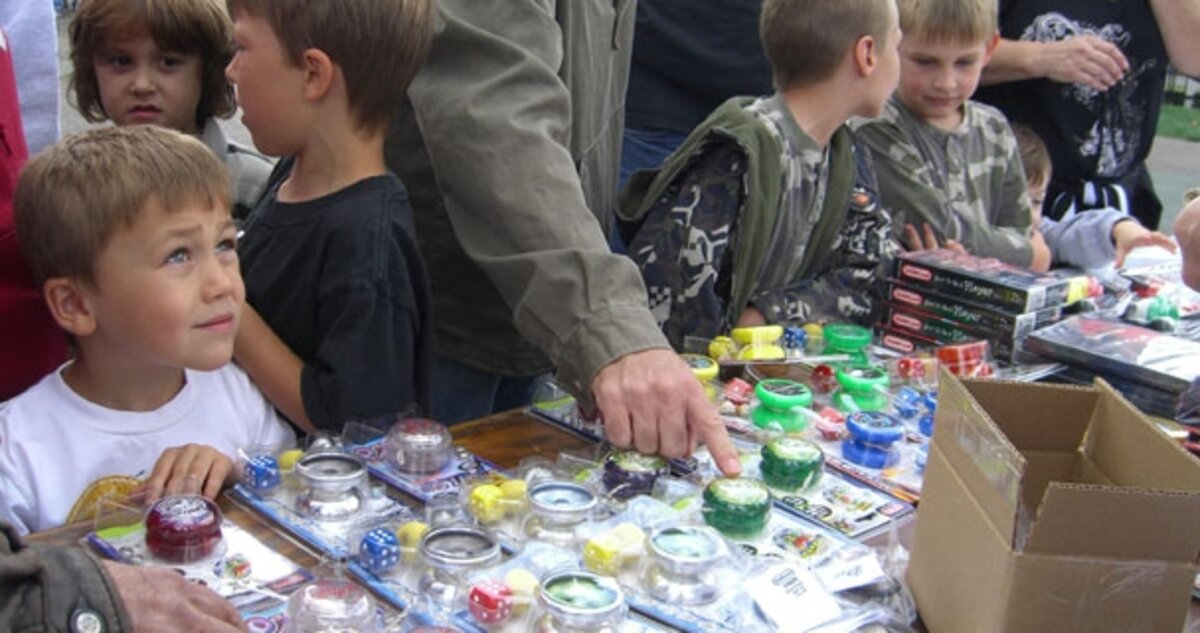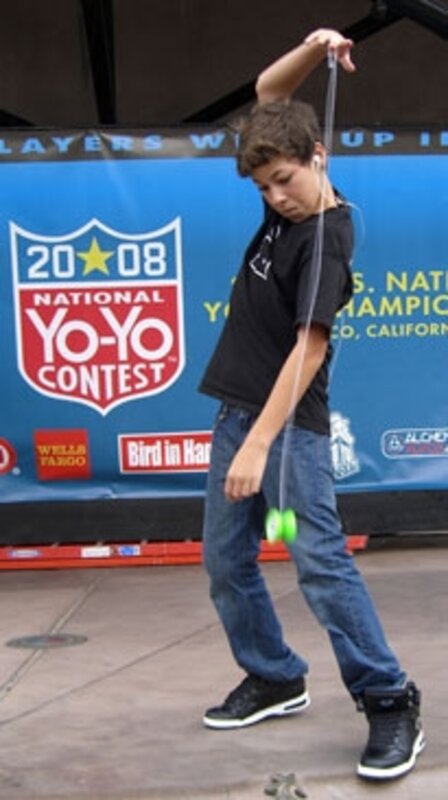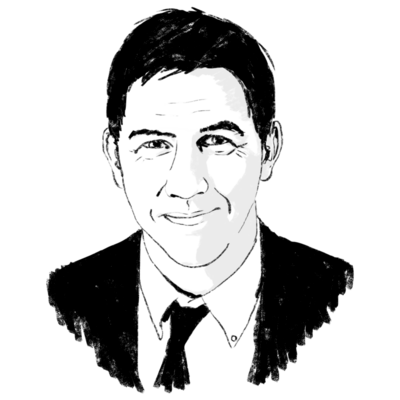The yo-yo used in ways you won’t recognize
Loading...
| Chico, Calif.
Augie Fash climbs onto the outdoor stage at the city plaza here, yo-yo in hand. The crowd is lively, expectant. They know Fash’s skills. Around these parts, he’s something of a legend.
A rock song by AFI booms forth from the speakers, and Fash, a psychology student at California State University, Chico, begins to flick his yo-yo. His three-minute routine builds like a symphony – only it’s conducted at fiber-optic speed.
He spools and unspools his yo-yo into a series of complicated spirals and lassos and cat’s cradles. At times, it appears to hover in the air above him. Periodically he flashes an impish grin toward his fans.
“Augielicious!” someone screams.
This is not your father’s yo-yo. Neither is it your brother’s or cousin’s, for that matter. This is world-class performance art – Yo-Yo Mas playing a different kind of string. Here at the annual US National Yo-Yo Championships, top competitors fly in from Michigan and Florida and Washington State and proceed to dismantle any traditional notions you might have about what the toy can and cannot do.
Routines involve everything from looping the string around ears, elbows, or thighs to tossing a yo-yo into the air and catching it behind one’s back. Often using two yo-yos at once, they pass over tired tricks such as “rock the baby” (dangling the yo-yo like a pendulum) and “walk the dog” (rolling it along the floor) in favor of the “gyroscopic flop” and the “iron whip” (use your imagination).
“It just puts people agog,” says Bob Malowney, the founder and director of the national championships.
Contest judges give points based on complexity and delivery; they deduct points for tangled strings and loss of control. The young players – almost all males in their preteens to early 30s – range from artsy musicians to science geeks, though there is one college shotput thrower. Most tend to favor a skateboarding aesthetic. Beyond that, they defy categorization.
“I know a kid who’s perfectly normal, cool at school, plays basketball, and he yo-yos,” says Leif Hasle, a preteen from Chico.
As a group, the players are breathing new life into the old toy partly because of technical innovations. The addition of ball bearings during the 1990s allowed yo-yos to spin much faster. The Internet has also made an impact – the YouTube generation now shares tricks with players as far away as Brazil or Japan.
But the appeal of the yo-yo ultimately boils down to this: Most people want to be good at something, to feel a part of something bigger than themselves. That’s as true for floppy-haired boys in black hipster clothes as it is for teachers or wingtip-wearing accountants. Add to that a flair for performance, a taste for competition, and a slightly obsessive personality (some yo-yo players practice while brushing their teeth) and – voila! – a pocket-size toy becomes a perfect pastime.
“I think it’s one of the very few things that crosses gender lines and crosses racial lines and crosses economic lines,” says Jack Ringca, who in 2005’s national contest won the 5A division, in which the string is unattached to the player’s hand. He now manages yo-yo teams worldwide for Duncan Toys.
In reality, lines do exist. Males outnumber females in the yo-yo world by about 100 to 1, says Bill Deboisblanc, the contest’s head judge. Still, Mr. Ringca says, the few top female yo-yo players receive great respect.
To prove his point, he mentions “Bu-ko,” a Japanese phenom. A murmur flutters among his friends.
“See?” he says.
•�Ģ�Ģ
The players converge on this tree-lined Northern California community every year for a simple reason: No city loves yo-yo more than Chico loves yo-yo. International players vacationing in the US consider the city of 87,000 a “must-see.”
It houses the world’s only public yo-yo museum, complete with thousands of old Duncan Butterflies and Monarch Tricksters and the world’s largest working yo-yo (at 256 pounds, it requires a crane).
On Friday, the evening before the national contest, Ringca and several dozen other players gather inside the museum to wait out a rainstorm. The museum takes up the entire back section of Bird in Hand, Malowney’s toy store.
Malowney, the museum’s director, is a veritable encyclopedia of yo-yo history. He tells visitors about the yo-yo’s golden era, in the 1950s and ’60s, and about its gradual disappearance from the limelight as hula-hoops and Frisbees emerged. He fondly recalls the day in 1988 when Tommy Smothers of the Smothers Brothers comedy team brought a yo-yo on TV and a renaissance was born.
Malowney started his local yo-yo contest that year. By 1993, it only made sense to go national as contestants began flying in from Florida, Virginia, and Illinois. Since then, the sport has exploded.
“It’s an epidemic of yo-yos, seriously,” says Jeff Mullins, a computer engineer who brought his grandson, David Leyva, up from Phoenix. Mr. Mullins estimates that he’s spent $4,000 or $5,000 on about 65 yo-yos for David, who is a practice-while-brushing-your-teeth type kid. The best ones cost $300 to $400 apiece.
•�Ģ�Ģ
After the museum closes Friday, the contestants flock to the Holiday Inn, which quickly becomes a quirky adolescent utopia. Fueled by Squirt and Fruit Snacks, boys fill the halls with their looping plastic orbs. They yo-yo while talking on cellphones; they yo-yo in the elevator.
Couples leaving a reception weave their way through the throng. The wives smile in bemusement; a glint of longing flashes in the husbands’ eyes.
The next morning, as a gray sky spits drizzle, young Leif Hasle and his friend John Ferre stand on the grass practicing before the competition begins. Leif cheerfully lists the yo-yo’s many attributes.
“It’s fun. It’s out of the ordinary. It’s not something everyone does. It’s entertaining. It never seems to end the fun of it.” He pauses. “And it’s interesting.”
“Yeah,” John agrees. “That pretty much sums it up.”
Plenty of spectators have shown up to watch. A reporter, photographer, and videographer from Chico State’s newspaper, The Orion, stake out the plaza, periodically interviewing Fash. Fash and his roommate – who is also competing – both admit that the city’s affinity for the yo-yo is part of what drew them to attend school here. Fash deems the toy “good for my twitchy personality.”
While on a service trip with several other teenagers, he once yo-yoed at a Mexican prison. He was initially terrified, he says, but the prisoners loved it. As he left, they banged their coffee cups on their windows and yelled: “El Yo-Yo!” That became his nickname.
Late in the afternoon, the day’s most hotly contested competition – the 1A – gets started. A 14-year-old from Minneapolis throws his yo-yo under and around his leg. A 22-year-old from Cupertino, Calif., bounces his yo-yo out of his hat. They do “spirit bombs” and “split the atoms” and the aptly named “boingy.”
Then El Yo-Yo takes the stage. Later, Fash will readily confess to missing a couple moves and repeating a couple more, but to the layperson, all those twirls and throws and (he’s-doing-that-upside-down?) tricks look incredible.
Nearby, someone has stoked up a barbecue. The sky has finally cleared, and the plaza is bathed in warm afternoon sunlight. The music is pumping, the crowd is whooping, and little Chico is loving its yo-yo.





